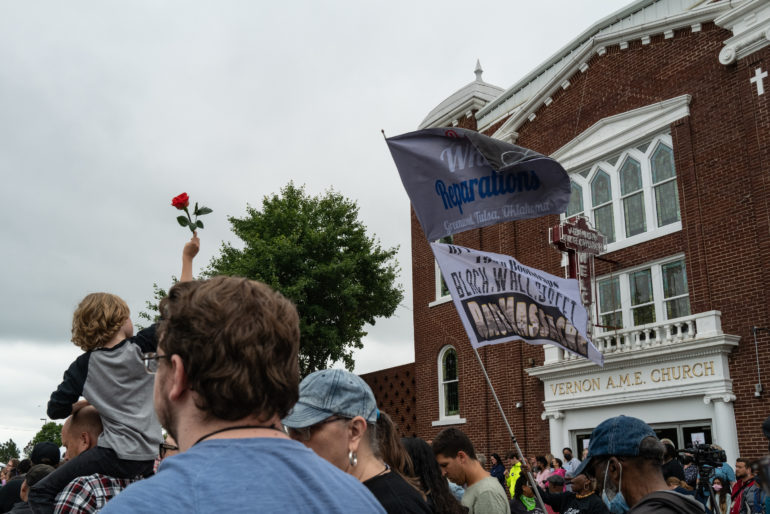For more stories like this, please subscribe to The Phoblographer.
“I love people, and I’m inspired by telling stories of people who are change-makers,” explains photojournalist Cheriss May to us in an interview. “I want to do this with dignity and respect of who they are, not what I want them to be…This allows people to relax and to be their authentic self.” Cheriss is a highly lauded photojournalist. But she’s also heavily involved in the photography community. And more importantly, she’s choosy about her gear. So we talked to her about what cameras she’s got in her camera bag!
The Demands of Modern Photojournalism
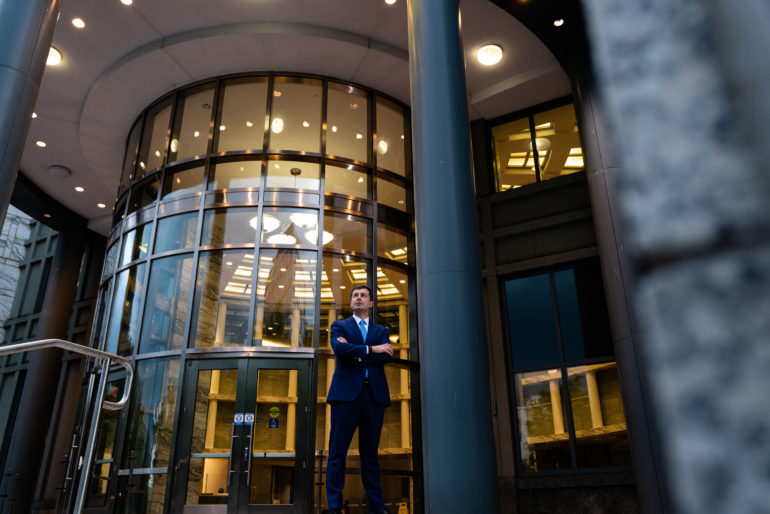
So what do modern photojournalists demand? Well, there’s quite a bit. The nature of how we tell stories and how the media adapts to keep consumers engaged constantly changes. With that said, Cheriss cites five things that are super important to her.
Versatility: For example, shooting video, photos, image versatility, etc.
Speed: You can’t operate well with a camera that can’t autofocus quickly or shoot many frames per second. You can miss the shot.
Durability: The rigors of photojournalism demand durable gear. Your gear may often take random little dings.
Power: The latest tech is always important!
Lightweight: The lighter a camera is, the less it will wear you out over time.
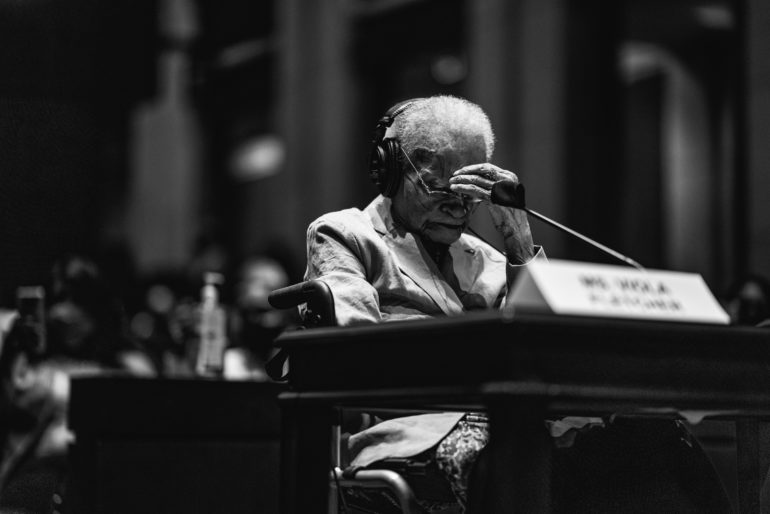
The Cameras in Cheriss May’s Camera Bag
“All this gear is small enough to fit in a small backpack and light enough to use all day without being overwhelmed,” says Cheriss. She’s a modern photojournalist who chooses Leica as her main gear. The idea of what a Leica is has evolved over the years for sure. When we traditionally think of a Leica, you’re probably envisioning the Leica M system. But Cheriss reaches for the SL system on a daily basis. Considering Leica’s improvements, this is understandable.
The three tools Cheriss really talks about are the Leica SL2, the Leica Q2, and the Profoto A1 Air TTL flash. “These cameras are light and powerful. They’re intuitive and allow me to relax, have fun, and create,” she states. Here’s a quick overview:
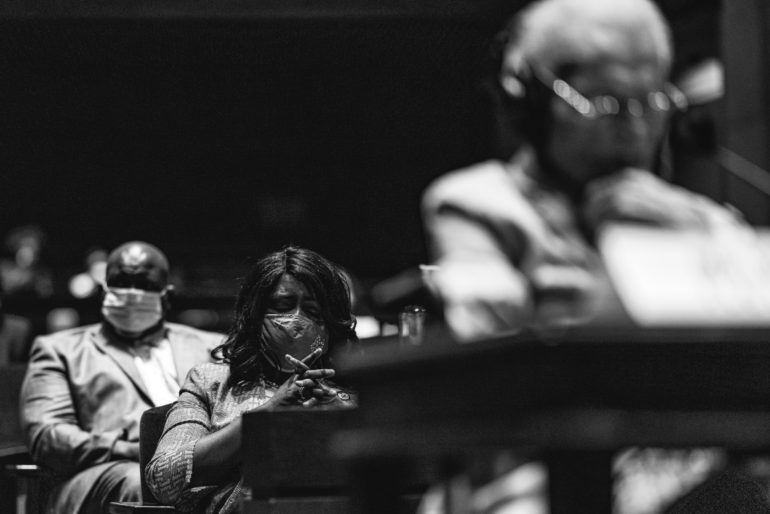
- Leica SL2: This camera boasts a 47 Megapixel full-frame sensor. In our tests, we found that at ISO 6400, we could still make wonderful prints at 17×22 inches. Additionally, it’s IP-rated to be incredibly durable. As a professional mirrorless camera, it’s also far smaller than most professional DSLRs.
“The SL2 is light enough to allow me the flexibility I need to move around. I don’t have the strain of carrying heavy gear all day for the different environments I need to navigate in the work I do. The SL2 is powerful enough to handle low light, high light, artificial light, and studio work.” – Cheriss May
- Leica Q2 and Q2 Monochrom: These cameras have similar sensors to the Leica SL2 with a fixed 28mm f1.7 Summilux lens on the front. They’re lightweight, small, and feel almost like a Leica M. They also boast autofocus, IP-rated durability, and fantastic image quality. As a photojournalist, you can’t sit at your computer for hours editing. It’s both against ethics and just not in the schedule. Besides, some stories just look better in black and white.
- Profoto A1 AirTTL: “The flash provides the light I need for portraits…It also provides a quick mobile studio,” says Cheriss.
Using Leica Cameras as a Working Photojournalist
We’ve reported on the gear used by various photojournalists in the field. DSLRs still dominate, but Cheriss has ditched them and jumped onto the mirrorless camera ship. Specifically, Cheriss shared a story with us about documenting the Tulsa Race Massacre. Here’s what she said:
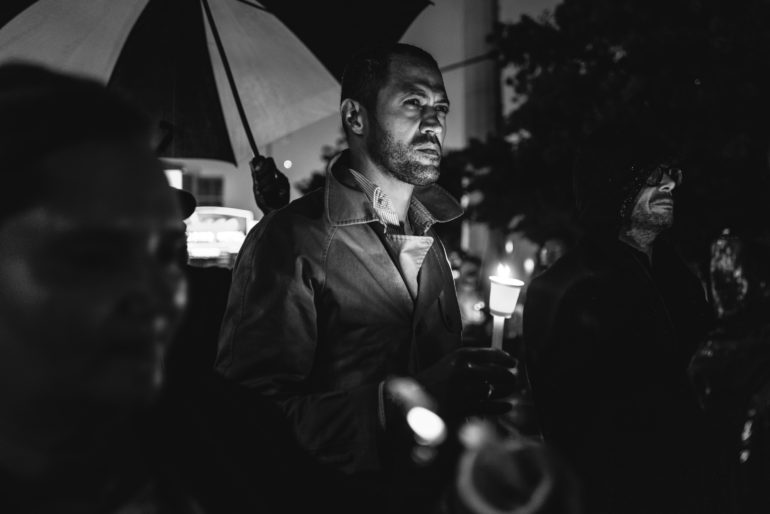
“As you can imagine, there were a lot of cameras there. The smaller footprint and versatility of my Leica cameras allowed me to move around easier and cut through all of the clutter to connect to some powerful moments. I took the SL2, Q2, and Q2 Monochrom. I was able to get high, low and in between crowds and objects without being obtrusive or intimidating, which helped me to connect in the most organic way with people.”
I recently photographed the hearing on the Tulsa Race Massacre on Capitol Hill. Two of the oldest known survivors, Viola “Mother” Fletcher, 107, and her brother, Hughes Van Ellis, 100, brought me to tears during their testimony. I took some deep breaths and leaned into my emotions. I photographed through my tears and was able to make a deeper connection. The room didn’t have the greatest lighting, it was low and muddy. I used my SL2, Q2, and Q2 Monochrom, which allowed me to quickly move around, it was also easy to keep the cameras stable, and the glass was fast enough to work through the challenging lighting.
Editor’s Note: This is a sponsored blog post by Leica. All images by Cheriss May. Used with permission.



